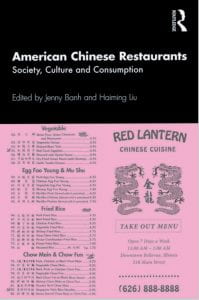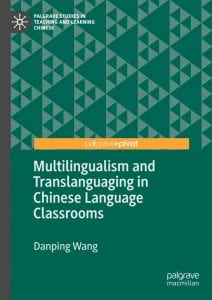 Golden Dragon and Purple Phoenix: The Chinese and Their Multi-ethnic Descendants in Southeast Asia introduces the rarely discussed records of Chinese descendants living in Southeast Asian countries. This book highlights their influences on the communities they lived in and challenges they overcame. Written by Lee Khoon Choy, this book is based on his personal experiences and insights of more than three decades working as a Singaporean journalist and politician, visiting every country in Southeast Asia.
Golden Dragon and Purple Phoenix: The Chinese and Their Multi-ethnic Descendants in Southeast Asia introduces the rarely discussed records of Chinese descendants living in Southeast Asian countries. This book highlights their influences on the communities they lived in and challenges they overcame. Written by Lee Khoon Choy, this book is based on his personal experiences and insights of more than three decades working as a Singaporean journalist and politician, visiting every country in Southeast Asia.
The first chapter begins with the stories of lokjins (洛真) or the descendants of Chinese-Thai. Chinese migration to Thailand began during the Northern Sung dynasty. The Chinese immigrants were able to quickly assimilate with the Thais for two reasons: 1) Both the Thais and Chinese immigrants were Buddhists, and 2) the Thais welcomed Chinese as citizens, giving them equal rights. Many lokjins played important roles politically (e.g., many became Thai prime ministers). Influences of Chinese culture were also apparent. In the Thai language, many words originated from the Teochiu dialect. The grand palace of King Rama I has Chinese stone lions placed at the entrance as well as Chinese dragons and phoenixes carved at the roofing. Inspired by Romance of the Three Kingdoms (三国演义), Thai authors made a novel based on this classic Chinese literature.
Chapter two tells about Chinese migration to the Philippines which—similar to Thailand—also began as early as the Sung dynasty before the Spanish came. The Chinese men married the Filipinas, and their children were referred to as the mestizos. When the Spaniards came, the mestizos endured ill treatment and received no support from their homeland. As a result, many of them decided to assimilate into Spanish culture. Despite all the challenges, however, a number of mestizos rose to become prominent political figures, such as Maria Corazon “Cory” Sumulong Cojuangco Aquino who was the first woman president of the Philippines.
Chapter three introduced the history of the peranakans, or offspring of Chinese and Indonesian. Though rarely mentioned in historical records, Zheng He (郑和), a Muslim explorer living in the Ming dynasty, contributed to the spread of Islam in Indonesia and the increase of Chinese-Indonesian intermarriages. Years later, the Dutch came and separated the people in Indonesia based on their races, which was instrumental in the decline of Chinese-Indonesian intermarriages. Moreover, after Indonesia gained independence, the Chinese were banned from practicing their language and culture, causing many Chinese who were born after the mid-20th century to be unable to speak their home language. Yet, in 2000 Gus Dur, who has Chinese ancestry, became the fourth president of Indonesia and restored the rights of Chinese diaspora and peranakans to express their cultures. Indeed, the Chinese influence spreads beyond political aspects; for example, Chinese medicines are generally considered helpful to cure different illnesses. The origin of the infamous wayang kulit was actually from the Fujianese puppet show, potehi (布袋戏).
Moving on to the chapter about Myanmar, we read the stories of tayoke kabya, the descendants of Chinese-Burmese. Intermarriages began in the Sung, Yuan, Ming and Qing dynasties. The tayoke kabya adopted the culture of the Burmese people. Some influences of Chinese culture could be seen, for example, in the Buddhist temples and Buddha images on Pagan’s building. The Burmese language has many words originating from the Chinese language (e.g., chopsticks, tofu, ship). Moreover, Burmese people tend to like the number eight, believing in Chinese superstitions.
In Cambodia, Chinese-Cambodian intermarriages were common until the early 1900s and decreased by the 1920s when more Chinese women came to the country. Chinese influence could be seen in areas including culture, language, architecture, and politics. Chinese artists were involved in sculpting some parts of the Angkor Wat, the well-known Buddhist temple. Chinese words for common objects such as food and clothing were incorporated in the local Cambodian language. Moreover, the chapter discusses the conditions of Chinese after Cambodian Independence, including under the eras of Lon Nol, Khmer Rouge, and Pol Pot.
The history of Chinese migration to Vietnam began with the Three Kingdoms period (三国时代) when Zhu Geliang’s (诸葛亮) army went to Vietnam. In the beginning of the migration, the Chinese deeply influenced the Vietnamese with Confucianism, Daoism, and Buddhism. Yet, the condition reversed when Vietnam gained their independence. Throughout history, Vietnam and China have contributed to each other; for example, Nguyen Banh from Vietnam helped with the building of the Forbidden City in 1445, while Ly Cong Uan, who had Fujianese ancestry, became the founder of the Ly dynasty of Vietnam.
Unlike the other Southeast Asian countries, Chinese-Laotian intermarriages were less common. Due to its landlocked location, Chinese migration to Laos has been relatively low compared to other countries in Southeast Asia, and the immigrants mainly came from neighboring regions, Yunnan and Guangxi. The chapter included discussions on several Laotian political figures, the impact of Communism on Laos, as well as the Sino-Laos or China and Laos relations throughout history.
Chapter eight shares the story of peranakans or Chinese-Malaysians where the male peranakans are called “Babas” and the female “Nyonyas.” Chinese-Malaysian intermarriages began during the Sri Vijaya (三佛齐) Buddhist era and further increased after Zheng He, the Muslim Chinese explorer, arrived in Malacca. Though such intermarriages in modern-day Malaysia have decreased, the peranakans have developed their unique cultures that include celebrating Chinese festivals, such as Zhong Wu Jie (中午节) where they make Baba-style rice dumplings called nyonya chang (娘惹糯) and Chinese New Year where they give angpows (红包) to children. The author also shared his personal story growing up in a Baba family. Despite living in a family that did not speak Chinese, he chose to attend a Chinese school. “I had my education in Chung Ling High School (钟灵中学) and developed a better affinity with the Chinese compared to my siblings,” wrote Lee Khoon Choy (426).
Singapore, the smallest Southeast Asian country, is the only country where the Chinese diaspora are politically dominant. They acknowledge and embrace their unique identity: a mix of Malay and Chinese. One prominent figure discussed in the chapter is Huang Zun Xian (黄遵宪), the first to advocate for the rights of Chinese diaspora. Seeing that many of them could not speak Chinese, he started Chinese schools that helped the migrants embrace their Chinese identity. Efforts by Emperor Guangxu and Dr. Sun Yat-sen also helped promote the spread of Chinese culture, though many Chinese diaspora chose to adopt local cultures and customs.
The last chapter of the book tells the stories of Chinese descents in Brunei. As in several other Southeast Asian countries, the explorer and admiral Zheng He played an important role in the increase of Chinese-Brunei intermarriages as many Chinese people came with him when he landed in Brunei. A number of leading Chinese figures were discussed, which include Dato Timothy Ong Teck Mong, who received the Most Honourable Order of the Seri Paduka Mahkota Brunei, and Dato Lim Jock Seng, the Second Minister for Foreign Affairs.
The book Golden Dragon and Purple Phoenix: The Chinese and Their Multi-ethnic Descendants in Southeast Asia invites readers to learn from history, particularly the lesser-known stories, of the Chinese diaspora living in Southeast Asia. The author revealed the struggles and the beauties of the fusions of cultures, encouraging us to embrace and respect different histories and further develop relationships within and across cultures.







